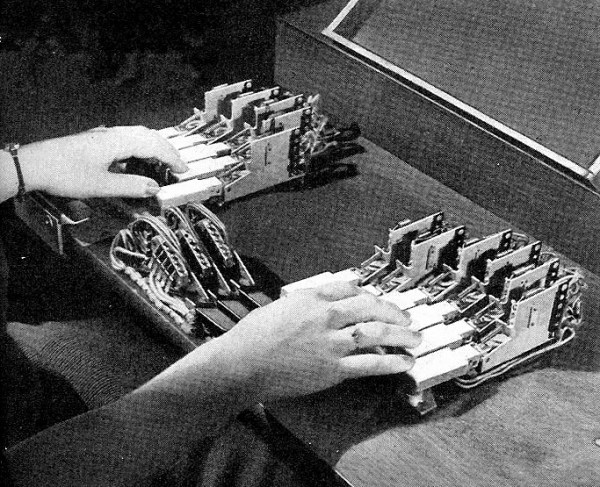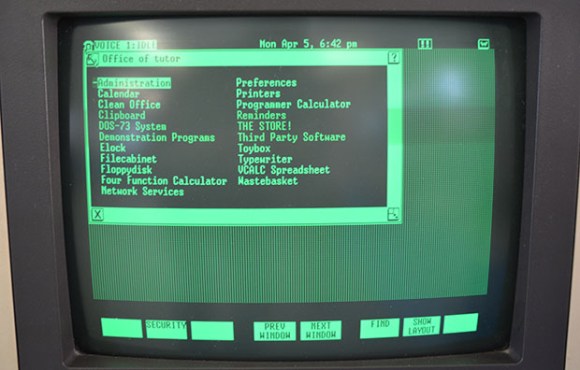This is the under-the-hood view of the keyboard for the Voder (Voice Operating Demonstrator), the first electronic device capable of generating continuous human speech. It accomplishes this feat through a series of keys that generate the syllables, plosives, and affricatives normally produced by the human larynx and shaped by the throat and tongue. This week’s film is a picture montage paired with the audio from the demonstration of the Voder at the 1939 World’s Fair.
The Voder was created by one [Homer Dudley] at Bell Laboratories. He did so in conjunction with the Vocoder, which analyzes human-generated speech for encrypted transfer and re-synthesizes it on the other end. [Dudley] spent over 40 years researching speech at Bell Laboratories. His development of both the Voder and the Vocoder were instrumental in the SIGSALY project which aimed to deliver encrypted voice communication to the theatres of WWII.
Continue reading “Retrotechtacular: The Voder From Bell Labs”





















